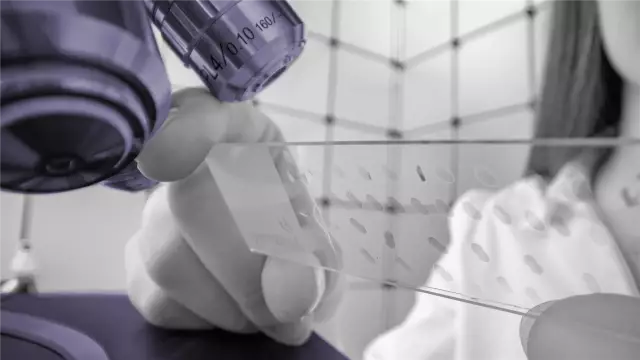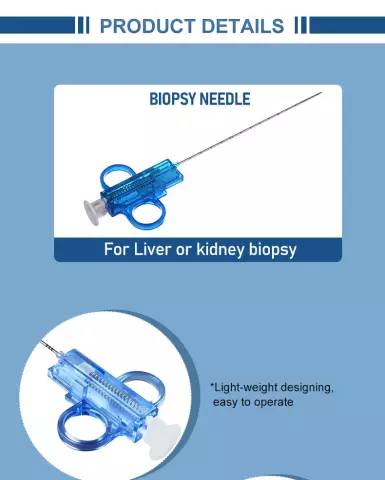- Author Rachel Wainwright [email protected].
- Public 2023-12-15 07:39.
- Last modified 2025-11-02 20:14.
Thyroid biopsy

To determine the state of the cells of the thyroid gland and the nodes formed in it, a biopsy of the gland is performed: with the help of a needle, cellular material is taken from it for analysis. The procedure is called fine needle biopsy of the thyroid gland or puncture biopsy of the thyroid gland and is considered the main method for diagnosing thyroid masses. A biopsy makes it possible to make a final diagnosis - after the doctor conducts a tactile examination and ultrasound examination, collects an anamnesis, examines the existing risk factors that may have influenced the appearance of neoplasms.
Biopsy is indicated not for all patients. Only nodes with indirect symptoms of malignancy are subject to research, nodes that are larger than 1 cm in size, special attention is paid to single nodes.
How is a thyroid biopsy performed?
The procedure does not require special preparation, it is carried out without anesthesia. Anesthesia is considered inappropriate because the drug can mix with the cellular material and therefore affect the final result of the thyroid biopsy. In addition, for anesthesia, you will need to give an injection, which, in terms of pain, does not differ from a puncture and therefore does not make sense. Patients for whom it will be psychologically difficult to endure such a procedure are recommended to take a sedative the day before.
The patient should be in a supine position during the thyroid biopsy and tilt his head back. To obtain a sufficient amount of cellular material, the doctor usually makes 2-3 punctures from one node. The puncture site is pretreated with alcohol. The resulting material, which has fallen into the lumen of the needle, is placed on a glass and transferred to histology.
Do not swallow during the injection, because the needle may move and the wrong material will be taken for analysis.
A fine-needle biopsy of the thyroid gland is performed under the control of an ultrasound machine, this increases the likelihood of taking material from the affected node. Since the procedure is simple, it can be carried out on an outpatient basis, it lasts no more than half an hour.
After a puncture biopsy of the thyroid gland, soreness may be felt at the puncture site for another two or three days. A small hemorrhage can occur if the needle enters the vessel.
There are also known cases when during a puncture in the isthmus the doctor pierced the trachea. In this case, the patient begins to cough violently, so the needle should be removed immediately and the procedure delayed for a while. Patients with osteochondrosis of the cervical spine may feel a short dizziness after the biopsy; they cannot insert abruptly after the procedure.
Evaluation of thyroid biopsy results

Cytological examination of the obtained material lasts 3-7 days. The overall accuracy for nodular pathology is about 95%. The deviation from 100% is largely due to the qualifications of the personnel performing the procedure and directly to the peculiarity of the method itself: the largest percentage of uninformative and erroneous diagnoses falls on small nodes - up to 1 cm.
A benign result of a thyroid biopsy is considered to be "nodular goiter" and its various variations. The good quality with this biopsy result is 98%.
Such conclusions (with a probability of 95%) as “colloid”, “blood”, “groups of cells / cells of the follicular epithelium” can be considered as benign.
The probability of malignancy is 50% with the following conclusions: "Difficulties in differentiating carcinoma and adenoma", "a node with symptoms of atypia and proliferation of follicular epithelium." Such formulations are interpreted as "follicular neoplasia".
With the formulations: "medullary carcinoma / carcinoma / elements of carcinoma / papillary thyroid carcinoma", "suspicion of carcinoma", "malignancy cannot be excluded" - the probability of malignancy is 100%, 90% and 70%, respectively.
Found a mistake in the text? Select it and press Ctrl + Enter.






